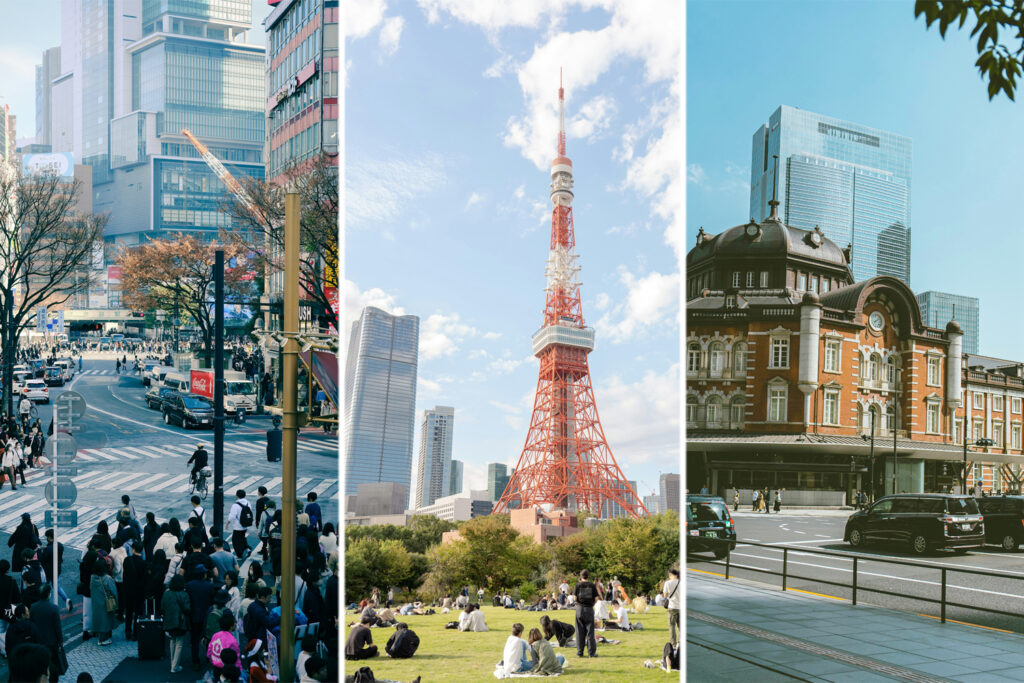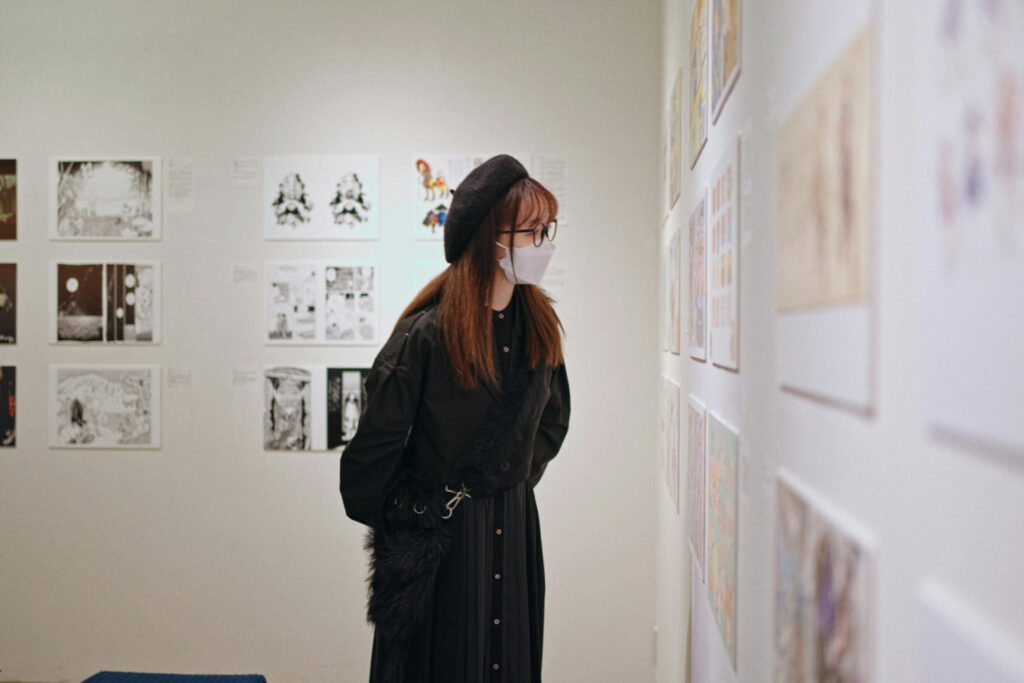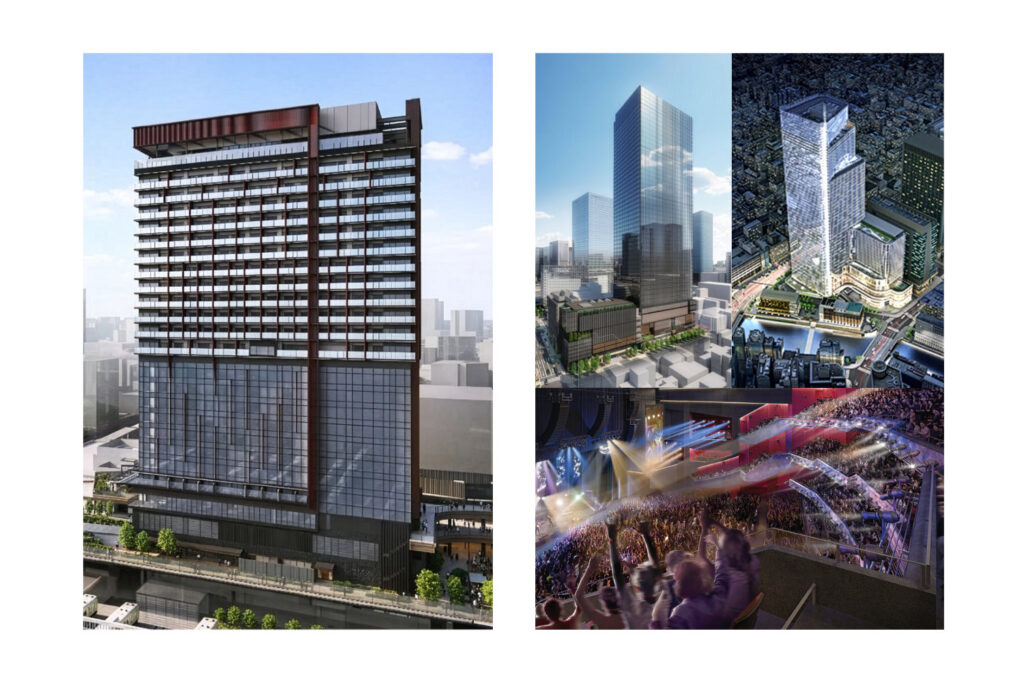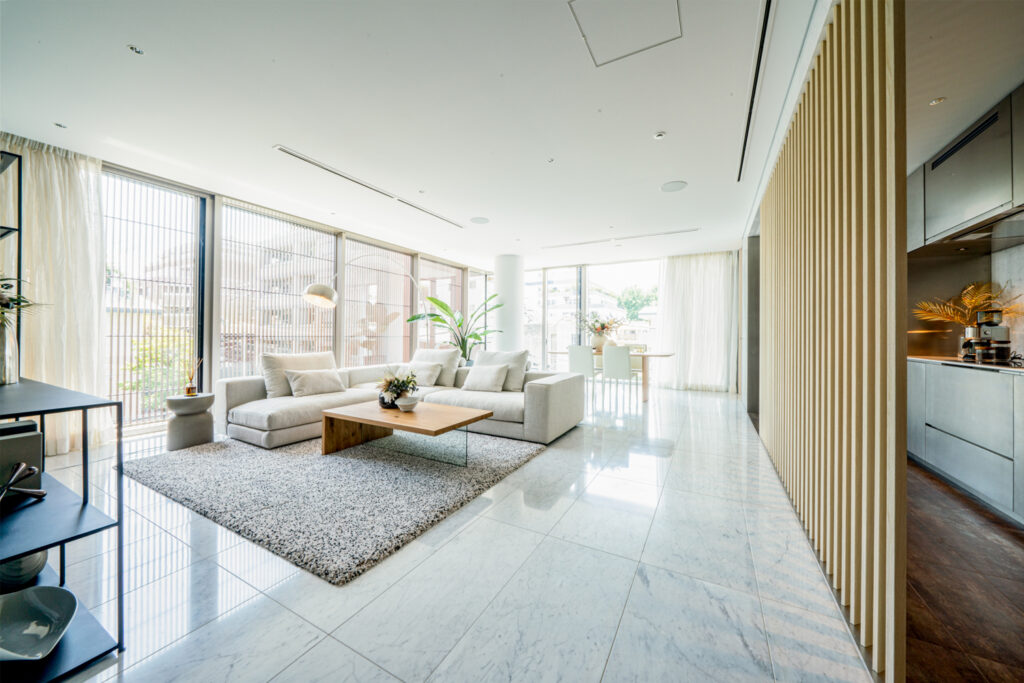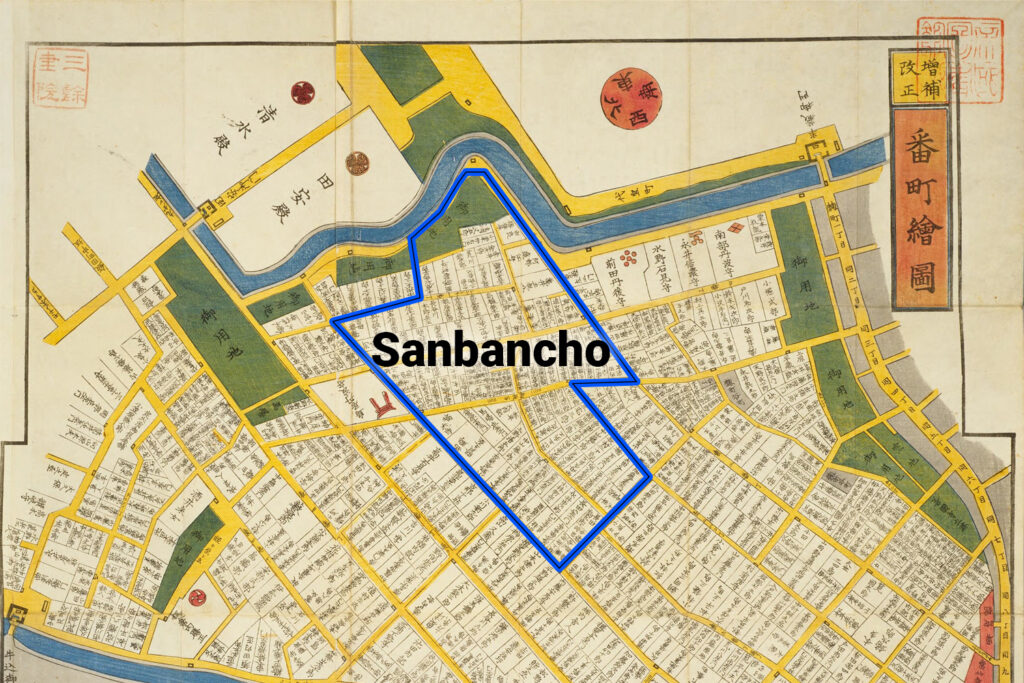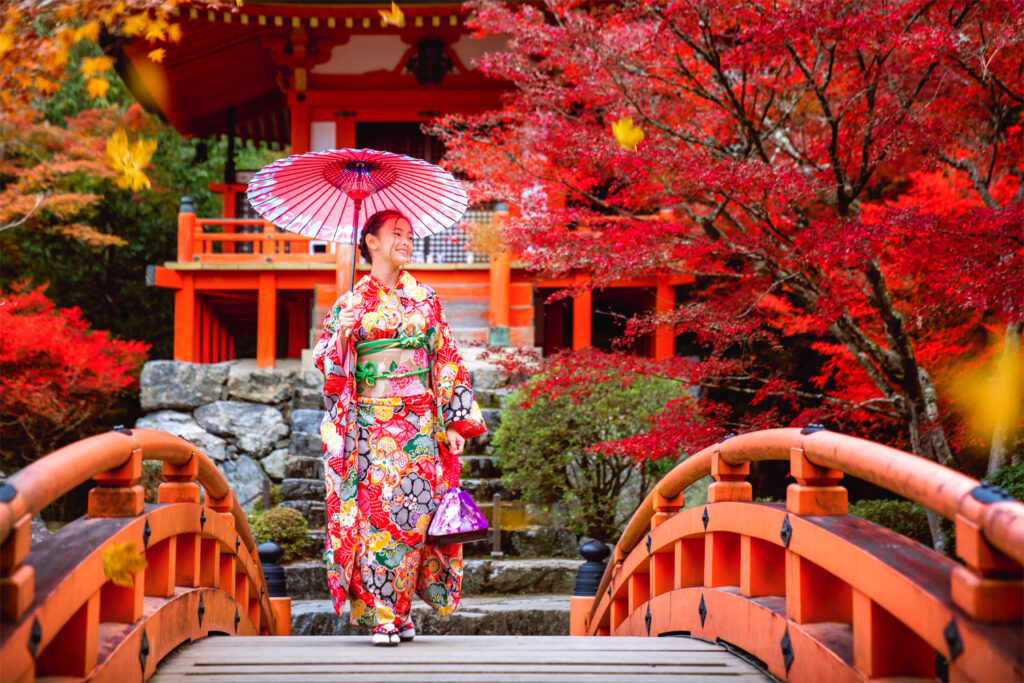
Tokyo’s parks and gardens come alive throughout the year, offering perfect opportunities to enjoy nature’s beauty in one of the world’s busiest cities. These green spaces provide welcome escapes from fast-paced urban life, giving both residents and visitors chances to unwind and reconnect with nature.
Parks and gardens in Tokyo act as vital “third places”, social environments beyond home and work, where people can relax, meet others, and find peace. Whether it’s expansive parks or serene gardens, these spaces nurture both physical and mental well-being. They create a sense of community and extend the idea of “home” beyond the four walls, allowing us to embrace nature’s tranquility.
The proximity to parks and gardens significantly impacts Tokyo’s real estate market. Properties near these green spaces often command higher prices and greater demand, as easy access to nature is a rare and desirable commodity in the city’s urban landscape. For both long-term residents and newcomers, the presence of nearby parks and gardens can be a decisive factor in choosing a place to live, underscoring their importance in enhancing Tokyo’s livability and shaping its urban fabric.
Tokyo has many great parks and gardens for you to visit. Some are small and hidden, while others are large and well-known. Each park has its own unique features and charm.
You can enjoy different activities in these parks, from picnics to flower viewing to cultural events.
Yoyogi Park

Yoyogi Park stands as one of Tokyo’s largest city parks, offering sprawling lawns, ponds, and forests that provide great escapes for residents and visitors. Located next to the famous Meiji Jingu shrine, the park creates a popular spot for jogging, picnicking, and various outdoor activities throughout the year.
The park serves as a vital gathering place and cultural hub, hosting various events and attracting diverse crowds from street performers to hobby enthusiasts. Wide paths make it perfect for jogging or cycling on sunny days, while sprawling green spaces provide ideal settings for picnics and relaxation. The park’s central location in Shibuya makes it easily accessible while maintaining a peaceful atmosphere.
Cherry blossom season transforms Yoyogi Park into a pink wonderland that draws visitors from across the city. Hanami parties under the blooming trees create a magical experience in the festive spring atmosphere. The park’s 600 cherry trees create stunning displays that attract photographers and nature lovers during peak blooming season.
The park hosts many events throughout the year, from outdoor concerts to cultural festivals where you might catch street performances during weekend visits. You’ll often see hobby groups practicing everything from dance to music, creating a vibrant community atmosphere that makes each visit unique.
Yoyogi Park also supports diverse wildlife that thrives in the urban environment. You can spot various birds, small animals, and beautiful flowers as you stroll through the grounds. The changing plant life provides fresh scenery with each season, making every visit feel different and special. The park’s large open areas also make it popular for sports activities and fitness groups.
Rating: 4.3 (25,300 reviews)
Location: 2-1 Yoyogikamizonocho, Shibuya City, Tokyo 151-0052, Japan
Hibiya Park

Hibiya Park holds special significance as Tokyo’s first western-style park, serving the city since 1903. This historic green space features unique blends of Japanese and European landscape design, with manicured gardens, fountains, and wide pathways creating distinctive atmosphere that sets it apart from traditional Japanese gardens.
The park houses several notable attractions, including the Hibiya Public Hall, Tokyo’s first western-style theater, and the Hibiya Library, which offers tranquil reading spaces for visitors seeking quiet moments. These cultural facilities add educational and entertainment value to your park experience.
The large fountain near the center serves as a popular meeting spot and photo opportunity, while the open-air concert hall hosts free performances on weekends, adding lively atmosphere to visits. The music bowl creates a natural amphitheater where you can enjoy various performances throughout the year.
Nature lovers appreciate the park’s diverse plant life that changes dramatically with seasons. In spring, cherry blossoms paint the landscape in soft pink hues, while autumn brings brilliant golden ginkgo trees that create stunning displays. The park offers plenty of benches and open spaces perfect for picnics or quiet relaxation amid the greenery.
The park’s central location makes it popular with office workers seeking midday breaks and families enjoying weekend outings. Despite being in the heart of Tokyo, Hibiya Park maintains peaceful atmosphere that provides welcome relief from bustling urban surroundings. The park’s historical significance as Japan’s first western-style park adds cultural depth to every visit.
Rating: 4.2 (14,700 reviews)
Location: 1-6 Hibiyakoen, Chiyoda City, Tokyo 100-0012, Japan
Ueno Park

Ueno Park stands as one of Japan’s first public parks, boasting rich history and diverse attractions since its establishment in 1873. This sprawling public park offers numerous cultural institutions, beautiful landscapes, and recreational opportunities that attract millions of visitors annually, making it one of Tokyo’s most important cultural destinations.
The park houses several world-renowned museums, including the Tokyo National Museum, National Museum of Western Art, and Ueno Zoo, Japan’s oldest zoological garden. These cultural facilities make Ueno Park unique among Tokyo’s green spaces, combining education with recreation in ways that few other parks can match.
Shinobazu Pond creates a scenic centerpiece that becomes especially beautiful when covered with lotus flowers in summer. You can rent boats to paddle around and enjoy a peaceful atmosphere away from city noise. The pond attracts various waterfowl and provides excellent opportunities for bird watching throughout the year.
The park covers over 500,000 square meters, giving you plenty of space to explore and discover new areas with each visit. Wide paths connect different sections of the park, making it easy to move between museums, natural areas, and recreational facilities.
During cherry blossom season, Ueno Park transforms into one of Tokyo’s most spectacular hanami destinations. The park’s 1,000 cherry trees create pink tunnels along walking paths, drawing huge crowds of families and friends celebrating spring’s arrival. The hanami tradition here dates back centuries, making it one of Tokyo’s most authentic cherry blossom viewing experiences.
The park also features various cafes, shops, and street performers that contribute to its vibrant atmosphere. You can easily spend entire days here exploring museums, enjoying nature, and participating in seasonal celebrations that connect you with Japanese culture and traditions.
Rating: 4.3 (31,000 reviews)
Location: Uenokoen, Taito City, Tokyo 110-0007, Japan
Shiba Park

Shiba Park stands among Japan’s oldest parks, creating historic green space in Tokyo’s Minato ward since 1873. Built around the renowned Zojoji temple, this park offers serene escape from the city’s bustling atmosphere while maintaining deep connections to Japanese history and culture that span several centuries.
Walking paths wind through the park lined with towering camphor, zelkova, and ginkgo trees that provide stunning autumn color displays during fall season. The park’s artificial gorge, known as Momiji-dani, creates a popular spot for admiring vibrant foliage and photography, especially when the maple leaves turn brilliant red.
Zojoji Temple sits adjacent to the park, adding significant cultural interest to visits. The temple’s impressive architecture and traditional atmosphere complement the natural beauty perfectly, while Tokyo Tower often appears above the treeline, creating interesting contrasts between traditional and modern Japan that make for unique photography opportunities.
The park feels spacious and rarely becomes overcrowded, even during busy weekends when other Tokyo parks might feel cramped. Families and local residents often come here to unwind, with people walking dogs, children playing in safe environments, and office workers taking peaceful lunch breaks under the shade of ancient trees.
The park’s location in central Minato ward makes it particularly valuable for residents of luxury properties in the area. As one of Tokyo’s oldest public parks, Shiba Park represents important cultural heritage while providing practical green space for modern urban living.
Rating: 4.2 (15,700 reviews)
Location: 4 Chome-10-17 Shibakoen, Minato City, Tokyo 105-0011, Japan
Meiji Jingu Gaien
Meiji Jingu Gaien creates a vast park complex in central Tokyo, best known for the iconic Jingu Stadium hosting professional baseball games and other major sporting events. The park features numerous sports facilities including tennis courts, golf driving range, and indoor ice skating rink that serve athletes and recreational players year-round.
The park’s famous ginkgo tree-lined street creates one of Tokyo’s most photographed autumn scenes. During fall season, the avenue transforms into a golden tunnel that attracts visitors from across the city for spectacular foliage viewing. This iconic street appears in countless travel photos and represents one of Tokyo’s most beautiful seasonal displays.
Sports lovers enjoy watching baseball games at Jingu Stadium, which hosts the popular Tokyo Yakult Swallows team, or using the various athletic facilities for tennis and other activities. The stadium atmosphere during baseball season creates exciting community experiences that connect you with Japanese sports culture.
The park also houses the Meiji Memorial Picture Gallery, showcasing artworks and artifacts related to the Meiji period that helped shape modern Japan. This cultural facility adds educational value to visits while honoring the imperial figures for whom the park is named.
Wide-open spaces throughout the park provide room for relaxation and family activities beyond organized sports. The combination of sports facilities, cultural attractions, and natural beauty makes it perfect for both locals seeking recreation and tourists exploring Tokyo’s diverse offerings. The park’s connection to Japanese imperial history adds cultural significance to recreational visits.
Rating: 4.3 (14,500 reviews)
Location: 1-1 Kasumigaokamachi, Shinjuku City, Tokyo 160-0013, Japan
Hanegi Park

Hanegi Park creates a special destination in western Tokyo’s Setagaya ward, particularly famous for spectacular plum blossom displays that transform this neighborhood park into one of Tokyo’s premier seasonal attractions. This 8-hectare green space offers year-round recreation while becoming a pilgrimage site for “ume viewing” during late winter.
(Ume Viewing is the traditional Japanese custom of visiting parks, shrines, and gardens to enjoy the seasonal blooming of ume (plum blossoms). It typically happens from February to early March, earlier than cherry blossom (sakura) season.)
Located in Umegaoka, which translates as “plum trees hill,” the area developed around the train station about 15 minutes from Shinjuku by train. The neighborhood’s name reflects its historical connection to plum cultivation, and the park continues this tradition with its impressive collection of flowering trees.
The park’s 650 ume plum trees burst into white, pink, and red blooms from mid-February to early March, creating a delicately colored forest that signals winter’s end and spring’s approach. This annual display draws visitors from across Tokyo who come to witness one of the city’s most beautiful early spring spectacles.
During peak blooming season, the hillside viewing area becomes lively with visitors enjoying picnics under fragrant trees that fill the air with sweet perfume. Small food stalls appear for the occasion, providing convenient refreshments, while the nearby convenience store offers good options for outdoor dining during the plum viewing season.
Beyond plum season, the park stays busy with local residents using tennis courts and baseball fields where community sports teams practice and play. Several outdoor playgrounds provide free access for families, with slides and jungle gyms that keep children entertained while parents socialize.

The park’s location offers escape from central Tokyo’s dense urban landscape while remaining easily accessible by train. You can explore typical shopping streets nearby or visit the famous Maneki-neko temple (Gotoku-ji) just 1.5 kilometers away, making it easy to combine park visits with cultural exploration.
Rating: 4.2 (2,500 reviews)
Location: Hanegi Park, Umegaoka, Setagaya City, Tokyo
Arisugawa no Miya Memorial Park

Arisugawa-no-miya Memorial Park creates a beautiful urban oasis in Tokyo’s prestigious Minami-Azabu district. This nature-filled Japanese garden takes advantage of the varied topography of the Azabudai Plateau, featuring hills, valleys, and ponds that create serene and picturesque landscapes throughout the changing seasons.
Winding paths lead visitors across charming bridges and past tranquil water features that showcase traditional Japanese garden design principles. The park’s design makes excellent use of natural topography, creating interesting views and surprising vistas around every corner that reward careful exploration.
Seasonal displays change dramatically throughout the year, with cherry blossoms in spring creating romantic atmosphere perfect for hanami celebrations and vibrant autumn colors in fall providing spectacular backdrops for photography. The park’s carefully maintained gardens demonstrate the Japanese aesthetic principle of celebrating natural cycles.
The park includes a large pond that attracts various waterfowl, a playground that makes it family-friendly, and a library that provides quiet spaces for reading and study. These diverse facilities make the park suitable for visitors of all ages and interests, from young families to students and elderly residents.
The peaceful atmosphere provides welcome relief from busy city life, allowing people to unwind and connect with nature in this prestigious neighborhood. The park’s location in Minami-Azabu adds to its appeal for luxury property residents, offering high-quality green space that significantly enhances the area’s desirability and property values.
Rating: 4.3 (2,800 reviews)
Location: Arisugawa-no-miya Memorial Park on Google Maps
Kiyosumi Park and Gardens

Kiyosumi Park offers a hidden gem experience in Tokyo’s Koto City, providing peaceful escape away from bustling city streets in a neighborhood that many tourists never discover. This tranquil park centers around a large pond surrounded by lush greenery and traditional Japanese garden elements that create authentic cultural experiences.
Stone lanterns and carefully placed rocks create authentic traditional garden atmosphere that transports visitors to more peaceful times. The park becomes especially lovely during cherry blossom season when trees burst into pink blooms that reflect in the pond water, creating double beauty perfect for photography and quiet contemplation.
You can relax on benches strategically placed around the pond while watching colorful koi fish swim in clear water. The park also features a small tea house where you can enjoy matcha while taking in scenic views, adding cultural depth to visits and providing authentic Japanese experiences.
Well-maintained paths make walking easy and pleasant through this clean, serene environment that feels worlds away from busy Tokyo streets. The park attracts both locals seeking peaceful moments and visitors wanting to experience traditional Japanese garden design in an intimate setting that larger parks cannot provide.
The park’s location in Koto City makes it easily accessible while maintaining authentic atmosphere that some of Tokyo’s more famous gardens have lost to tourism. This balance between accessibility and authenticity makes Kiyosumi Park particularly valuable for those seeking genuine Japanese garden experiences.
Rating: 4.4 (5,000 reviews)
Location: 2 Chome-2 Kiyosumi, Koto City, Tokyo 135-0024, Japan
Koishikawa Korakuen Garden

Koishikawa Korakuen Garden transports visitors to a peaceful world of traditional Japanese landscape design that has remained largely unchanged for centuries. Dating back to the early Edo period, this historic garden blends Chinese and Japanese styling elements to create unique and beautiful environments that showcase cultural exchange.
A stunning central pond serves as the garden’s focal point, surrounded by carefully manicured trees and shrubs that reflect seasonal changes in the water’s surface. The design changes dramatically with seasons, offering different experiences throughout the year that encourage repeat visits to appreciate subtle variations.
Vibrant red maple leaves create spectacular autumn displays that rank among Tokyo’s best fall foliage viewing, while delicate cherry blossoms mark spring’s arrival with gentle beauty. The garden features a small rice paddy that demonstrates traditional agriculture, a tea house for cultural experiences, and several traditional bridges that add historical charm.
Walking through these grounds connects visitors with centuries of Japanese garden history and design philosophy while providing perfect escape from city noise just outside the walls. The garden demonstrates principles of borrowed scenery and careful spatial design that influence modern landscape architecture.
As one of Tokyo’s oldest gardens, Koishikawa Korakuen represents living cultural heritage that continues to teach visitors about Japanese aesthetic principles. The garden’s small size actually enhances its intimate atmosphere, allowing visitors to appreciate details that might be lost in larger spaces.
Rating: 4.4 (6,000 reviews)
Location: 1 Chome-6-6 Koraku, Bunkyo City, Tokyo 112-0004, Japan
Komazawa Park

Komazawa Olympic Park spans vast green areas in Setagaya, originally built for the 1964 Tokyo Olympics and transformed into one of Tokyo’s premier recreational destinations. The park features a large stadium, baseball fields, tennis courts, jogging course, and dog run serving various interests and activities for athletes and families alike.
Wide open spaces and tree-lined paths provide serene escape from city life while offering extensive facilities for sports and recreation. The park offers variety of sports facilities, including a professional running track and soccer fields, while plenty of benches and grassy areas create perfect spots for picnics or lounging in the sun.
For fitness enthusiasts, the park provides excellent facilities with outdoor gym equipment and well-designed jogging courses that attract serious runners and casual walkers. You’ll see locals exercising throughout the day, creating motivating atmosphere for your own fitness activities and community connections.
The impressive Olympic stadium showcases distinctive architecture from the 1964 Games, adding historical significance to visits and connecting you with Tokyo’s Olympic heritage. The stadium represents important period in Tokyo’s modernization and continues to host sporting events and cultural activities.

The park’s original Olympic heritage creates inspiring atmosphere for recreational activities and exercise, reminding visitors of the international athletic achievements that took place here. The combination of historical significance and modern facilities makes Komazawa Park unique among Tokyo’s recreational spaces.
Rating: 4.1 (6,800 reviews)
Location: 1-1 Komazawakoen, Setagaya City, Tokyo 154-0013, Japan
Mizumoto Park
Mizumoto Park stands out as one of Tokyo’s largest parks, covering an impressive 96 hectares in Katsushika City. This expansive green space offers peaceful escape from bustling city life while providing diverse recreational opportunities throughout the year in a setting that feels far removed from central Tokyo’s intensity.
The park features beautiful flower gardens, expansive lawns, and serene ponds that create varied scenery as you explore different sections. Stunning cherry blossom displays in spring attract visitors for hanami celebrations, while lovely iris gardens in early summer provide spectacular seasonal attractions that rival more famous destinations.
Activities include boat rentals for pond exploration that offer unique perspectives on the park’s natural beauty, picnic areas on grassy spaces perfect for family gatherings, and tree-lined walking paths suitable for exercise and contemplation. The park provides excellent opportunities for bird watching and photography, with diverse wildlife thriving in the large natural environment.
The park’s considerable size means you can always find quiet spots for solitary activities like reading or meditation, making it particularly valuable for city residents seeking peaceful moments away from Tokyo’s intense urban environment. Different areas of the park offer varying levels of activity and solitude.
The park’s location in Katsushika City provides authentic local experience away from tourist crowds while remaining accessible by public transportation. This combination of size, natural beauty, and local character makes Mizumoto Park special among Tokyo’s green spaces.
Rating: 4.3 (6,800 reviews)
Location: 3-2 Mizumotokoen, Katsushika City, Tokyo 125-0034, Japan
Cultural Significance of Parks and Gardens in Tokyo
Tokyo’s parks and gardens hold deep cultural meaning that reflects Japan’s history and traditions through their design and continued use. These green spaces showcase over 1,000 years of evolving aesthetic principles and social practices that continue influencing modern Tokyo life and urban planning.
Japanese gardens began as private spaces for emperors and nobles before gradually opening to the public during the Meiji period and afterward. Tokyo’s gardens showcase different historical periods, with some like Koishikawa Korakuen dating to the Edo period while others represent modern design approaches that blend traditional and contemporary elements.
Parks and gardens in Japan host traditional activities that connect visitors with Japanese cultural practices throughout the year. You can often see tea ceremonies or flower arranging demonstrations in natural settings that provide authentic cultural experiences. These activities help preserve traditional arts while making them accessible to new generations.
During cherry blossom season, hanami parties fill parks as people gather to admire blossoms while enjoying food and drink together in celebrations that strengthen community bonds. This practice reflects important Japanese philosophical concepts about appreciating fleeting beauty and the importance of seasonal awareness.
Many gardens feature carefully placed stones and water features that carry symbolic meanings in Japanese culture. These elements represent mountains, rivers, and natural features while creating harmony between human-designed spaces and natural environments, demonstrating aesthetic principles that continue to influence modern design.
Seasonal Highlights in Parks and Gardens in Tokyo

Tokyo’s parks and gardens transform throughout the year, offering unique experiences each season. Two standout times to visit are during cherry blossom season and when autumn colors peak.
Cherry Blossom Viewing
Cherry blossom season creates magical time when parks burst with pink and white blooms, usually from late March to early April. This brief flowering period draws millions of visitors to parks throughout the city for traditional hanami celebrations that represent one of Japan’s most important cultural traditions.
Ueno Park features over 1,000 cherry trees that create pink tunnels along walking paths, while Shinjuku Gyoen offers later-blooming varieties that extend the viewing season into late April. Each park provides different hanami experiences, from crowded festivals to quiet family gatherings.
For unique experiences, try Chidorigafuchi where you can rent boats and row along the moat lined with cherry trees, creating romantic scenes perfect for photography. Yoyogi Park transforms into a pink wonderland, attracting diverse crowds for hanami parties ranging from quiet family gatherings to lively group celebrations with music and dancing.
Autumn Foliage
Fall brings vibrant colors from mid-November to early December that rival spring’s cherry blossoms for natural beauty. Rikugien Garden provides top autumn viewing with traditional Japanese landscapes enhanced by red and gold leaves, while evening illuminations create magical nighttime experiences.
Koishikawa Korakuen offers stunning reflections of colorful trees in its central pond that double the visual impact of seasonal displays. Meiji Jingu Gaien’s famous ginkgo avenue creates one of Tokyo’s most photographed autumn scenes, transforming into a golden tunnel that attracts visitors throughout fall season.
Winter and Summer Attractions
Winter brings unique beauty through plum blossom viewing at Hanegi Park, where ume flowers bloom from February to March, providing color and fragrance during the coldest months while signaling spring’s approach. This early blooming creates special appreciation for seasonal change.
Summer offers different attractions including lotus flowers at Shinobazu Pond in Ueno Park and iris displays at Mizumoto Park. These seasonal flowers provide reasons to visit parks during hot weather while enjoying shaded paths and cooling water features that offer relief from summer heat.
Conclusion
Tokyo’s parks and gardens provide essential green spaces that enhance city life for millions of residents and visitors throughout the year. These carefully maintained areas offer opportunities for recreation, cultural experiences, and peaceful escape from urban intensity while connecting people with nature and community in meaningful ways.
Whether you seek cherry blossoms in spring, autumn colors in fall, plum blossoms in winter, or simply quiet spaces for daily relaxation, Tokyo’s diverse parks deliver natural beauty and community gathering places that enrich urban living. Their proximity often increases neighborhood desirability and property values, making them important considerations for anyone choosing where to live in the city.
The cultural significance of these spaces extends beyond recreation, connecting visitors with centuries of Japanese aesthetic principles and social practices that continue to shape modern life. As vital components of Tokyo’s urban fabric, these green spaces demonstrate how cities can balance development with nature, providing breathing room and community connections that make dense urban living not just possible but truly enjoyable.
Whats next?
Housing Japan offers luxury real estate near some of Tokyo’s best parks and gardens. These green spaces provide great opportunities for living close to nature while enjoying all the conveniences of city life. Properties near parks also offer strong investment potential and rental opportunities thanks to their continued appeal and desirability.
If you’re interested in buying or investing in property in Tokyo, Housing Japan has 25 years of experience helping international buyers, expats, and locals find the perfect property. Our expertise in Tokyo’s luxury real estate market ensures you’ll discover homes that combine premium living with access to the city’s most beautiful green spaces.
Contact Us
Housing Japan
7F BPR Place Kamiyacho, 1-11-9 Azabudai, Minato-ku, Tokyo, Japan 106-0041

